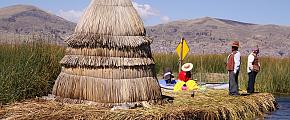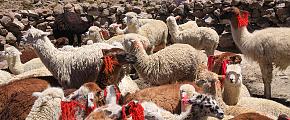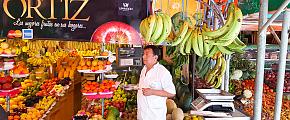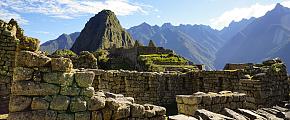10 Top-Rated Tourist Attractions to Visit in Peru
Travelers visiting Peru will find a wide variety of experiences in this nation rich in heritage, culture, natural splendor, and exciting new opportunities. Even though many tourists travel to Peru mainly to see the ruins of the magnificent South American Indian Inca Empire at the beautiful Machu Picchu, the country has many more excellent things to offer than just that one attraction.
Peru is brimming with exciting and diverse activities for tourists to enjoy alone or with their families. Surfing along the North Coast, hiking the Inca Trail to Machu Pichu, experiencing unique foods, and kayaking the Amazon are just some of the most exciting things to do in Peru. Some of the country's other sights and activities include delving into the secrets of the fascinating lines of Nazca, seeing the remains of the Incas' Sacred Valley, and discovering the vibrant culture of contemporary Lima.
Peru is a great place to visit in Latin America because it has a wide range of landscapes, cultures, activities, and friendly people.
Check out 10 of the most recommended attractions to discover Peru's finest.
Machu Picchu
Machu Picchu, the magnificent Inca City, is located on a stunning hill overlooking the Vilcamayo River (Sacred River or Urubamba River) at 300 meters of altitude. The panoramic view of the majestic, abrupt, and green hills, often bordered by nebulae crossed in places by the rays of sunshine, is almost as striking as the visit to the remains of the ancient Inca empire.
In their religion, the Incas believed in the forces of nature and communion with the heart. When deciding where to build their empire, they chose a spot that was as close to nature as possible and had as much atmosphere as possible.
For the record, until his death, the American explorer Hiram Bingham III, who discovered the citadel Machu Picchu in 1911, was convinced that it was the utopian rich land (Paititi or Lost City of the Inca) mentioned by Spanish troops in 1500.
No matter how you get there - by railroad, bus, or on foot down the Inca Trail—the trip itself is an integral adventure. On this extraordinary journey, no matter which way you look, the landscape will surely be a source of inspiration and refinement.
You can get to Picchu from several towns, such as Cusco, Urubamba, and Aguas Calientes. Machu Picchu is approximately 20 minutes via a treacherous, twisty route from Aguas Calientes. Getting to the location on foot via this route is doable, but it's a lengthy, steep slog that's not advisable.
It is required that visitors take a guided tour and adhere to a predetermined itinerary in order to get entry. There is a time limit on when you may access the park. Many sites falsely claim to offer tickets; however, you should only purchase them through the official one.
 Machu Picchu
Machu Picchu
The Inca Trail
For most visitors to Peru, the ultimate vacation experience is the Inca Trail trekking journey leading to the ancient Incan citadel of Machu Picchu. Although along the gorgeous path, hikers are seduced by the charm of the view and the atmospheric nature, the fact remains that the journey is arduous and demands at least four to five days to be completed.
The classic four- to five-day trek starts at 82 kilometers along the Cusco–Sacred Valley–Aguas Calientes train line, while several possible beginnings along the Inca Trail exist. With the classic Inca Trail trek, hikers can sightsee around 33 historical sites as well as breathtaking landscapes. On the journey's second day, you'll face the great challenge of climbing a 1,200-meter rise and crossing not one but two high peaks.
Planning ahead is essential, especially for the months of June through August, when demand is high for guided hikes.
It's possible to cut the walk down to only one or two days with the help of certain tour companies. Campsites may be found at several points on the path, including one near the entrance to Machu Picchu.
Trekkers can carry their bags or have them delivered by the tour company. There is a strict limit on the daily influx of walkers and carriers.
The Architectural Treasures of Cusco
Often described as an open-air museum, Cusco is a magnificent historical city in southern Peru. Mainly built atop the Inca ruins, Cusco is the largest tourist destination in South America. Listed as a World Heritage Site by UNESCO, Cusco has the most charming streets with ancient colonial houses, numerous museums that testify to the city's rich past, and a strong culture.
The heart of this ancient capital of the Inca Empire, Plaza de Armas (Parade Square or Parade Ground), is where visitors converge to see Iglesias de la Compania Jesus (Church of the Society of Jesus), built on an Inca palace in a Spanish Baroque architectural style, and the Cathedral Basilica of the Virgin of the Assumption, which forms a complex with the Triunfo temple and is the headquarters of the city's archdiocese. The Cathedral stands on the site once occupied by the Government House (Suntor) and the Palace of the eighth Inca Viracocha (Kisoarkancha). These are the two most prominent buildings in Cusco. In the daytime, the plaza is a wonderful site to begin your visits, have lunch, or sympathize with people.
Built on top of Coricancha, the Covent of Santo Domingo is a monastery of the Dominican Order housing a museum divided into four sections. Even though the city is brimming with museums, most visitors prefer to tour Santo Domingo.
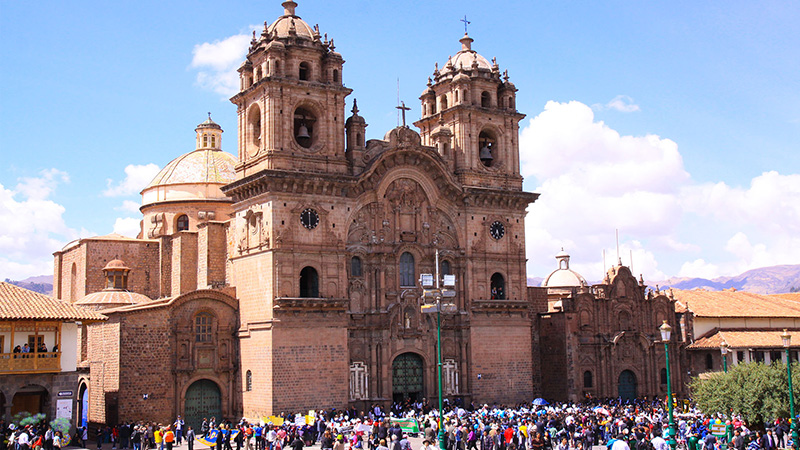 Cusco
Cusco
Lake Titicaca
Lake Titicaca is renowned for its crystal-clear blue waters and picturesque landscape of gently undulating mountains and little hamlets. Lake Titicaca and its surrounding regions are unique to other parts of Peru and famous for their stunning natural beauty and rich cultural heritage. Also called the highest navigable lake in the world, Lake Titicaca, the largest lake in South America, sits at an elevation of 3.82 kilometers below sea level in the Andes mountains.
The most beautiful and relaxing way to enjoy your tour in this area is to cruise the lake aboard traditional vessels or a glamorous ship like the Catamaran. There is much to see during the cruise, such as landing on small islands and interacting with indigenous people. The Floating Uros Islands (Islas Flotantes), home to fascinating indigenous villages of the Uros people, are a popular tourist destination on the lake. These reed-built islands have kept their ancient culture alive since the Inca era, and they are a great way to learn much about ancient history, culture, and traditions.
Tours of these islands will show you sights tailored to tourists, but they will also give you a look into local culture. The Uros communities are just a taste of what you can do on this journey. The actual attractiveness is found in the little gatherings in the mountains along the beaches of the lake. Taquile Island, 45 kilometers from Puno city, gathers a larger community, craft shops, homestays, and a robust collectivist culture. Amantani Island is the biggest island on the side of Lake Titicaca, and people can fish, farm, and see cultural shows there.
Puno serves as the primary access point to Lake Titicaca, and as such, it is home to several lodging options, eateries, and tour operators. Close to Puno city, visitors can access transportation services like trains, buses, and airplanes.
Colca Canyon
Considered the ultimate destination in Peru for expert hikers, Colca Canyon, with its picturesque view made of luxuriant, undulating hills and a flowing river way down at its base, is one of the world's deepest canyons (3,400 meters) and Peru's second-runner after the neighboring Cotahuasi Canyon, which is even deeper than the famed Grand Canyon.
Long before it became famous for its incredible views and trails on another level, several tribes, including the Kollowas, the Caccatapay, and the Cabanas, have called the Colca Canyon home over the course of the millennia. Most of these tribes were brought here under the Spanish colonial regime. Nowadays, in the spectacular rural scene, Baroque churches and old villas remain, along with some of the ancient settlements, including Chivay, Madrigal, Yanque, Maca, Lari, and Coporaque.
There are many trails for hikers, including Cacanaconde to Lake Mucura, Tapai Trail, Ampato Trail, and more, all in and around the canyon, and visitors may access the canyon from Arequipa, which is approximately four hours away. In addition to the bunch of attractions to see in the canyon, the Andean condors, which are the largest birds in the world, are a must-see.
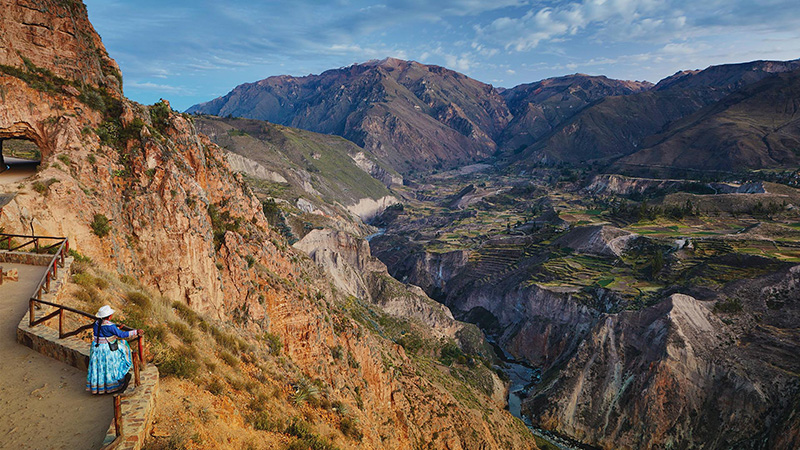 Colca Canyon
Colca Canyon
Nazca Lines
A visit to the mystical Nazca Lines will surely fill you with amazement. It wasn't until aircraft passed across the region in the early 20th century that pilots observed strange lines on the ground that were creating patterns and pictures, even though the drawings were enormous.
The designs on the mountainside between Nazca and Paracas have been known for a while, but not to that extent. But to really understand how big the patterns on the desert surface are, you need to see them from above.
Seventy representations of plants and animals, together with groups of geoglyphs, may be seen from above. The most extended lines are about 10 kilometers, and the patterns extend on more than hundreds of kilometers square of the surface. Some of these drawings are amazing in size, including the whale, the spider, the condor, the hands, the humming, and way more to sightsee.
The Paracas and Nazca civilizations, which lived around 900 BC and 600 AD, are widely believed to be responsible for the markings. However, no one knows precisely how or why they were drawn. As to why they were ever made, that's up for grabs. An astrological calendar for farming, an extraterrestrial landing strip, a jogging track, pathways connecting ritual places, and a water cult are only some of the hypotheses proposed to explain the lines.
To make the different figures, the darkest stones were removed from the top and stacked along the edges of the lines, exposing the brighter dirt underneath. You may reserve a seat beforehand to visit the site on a plane, or you can show up and try to get one if any are available.
After visiting the Nazca Lines, not far from there at only 5 kilometers you can tour the Cantalloc Aqueducts, constructed between the years AD 300 and AD 600 by the Nazca culture to ensure a constant supply of water throughout the year to the city of Nazca and make it possible for farmers to cultivate in an arid region.
The Sacred Valley
The picturesque Sacred Valley of the Incas can be reached in about an hour from Cusco. This verdant valley is home to several ancient Inca sites that are well worth a visit. However, the valley is a pleasant place to relax while perusing the marketplace or learning about the town's rich cultural heritage.
In this area, the Pisac Ruins are a must-see among all the wonders, but the Sunday Market is what tourists enjoy the most while in the valley. An incredible variety of regional specialties may be found in the marketplace.
If you have the time in this same region, it's highly advised to stop at Moray, a famed Inca ruin close to Cusco. Moray is a beautiful town with muyus in Quechua (three groups of circular terracing), formerly utilized by the Inca culture as an agricultural trial place. It might not be on the itinerary, but it is well worth the visit. You will surely be satisfied with your photos of the circular terracing built to exacting specifications.
Scientists believe the Incas' novel agricultural technique was the forerunner of the modern conservatory. As one moved up or down, the temperature and amount of sunshine changed. The site is astonishing, the circular terrace is 450 feet deep, and every muyu has 12 levels of deck, with the more significant depression having 600 feet in diameter.
Take some time off your trip to Moray to explore the Salinas mines of Maras, a small town close to Moray in the Sacred Valley. This great site comprises hundreds of salt pans dating back to the Inca Empire era. In addition to the more common white salt produced here, people are drawn to this surreal site of the valley for the pink salt that is in high demand.
With their complex design, the salinas mines are a great place to visit and take amazing photos. The best vantage point is the top of the salt ponds to capture the contrast between the lush, green Scared Valley in the background and the white salt fields.
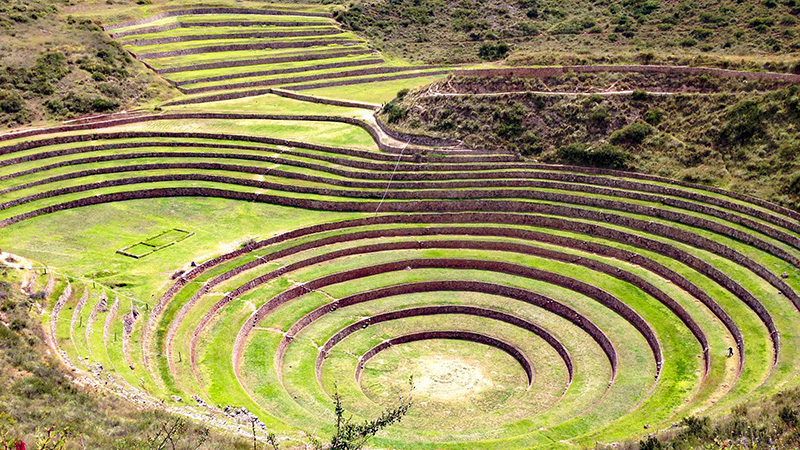 The Sacred Valley
The Sacred Valley
Ollantaytambo
When planning your trip to the Sacred Valley, make sure to stop at the picturesque village of Ollantaytambo and check out the impressive Royal House of the Sun (Ollantaytambo Fortress), an architectural jewel dating back to the Inca era, and archaeological remains. The city is perfect for strolling around. Similar to Pisac, it has a great selection of stalls offering locally created goods.
The town is dominated by two impressive Inca ruins, making for a picturesque backdrop. Don't rush back down; take your time exploring the hilltop remains. While touring this remarkable architectural achievement, visitors are often struck by the purity of The Bath of the Princess (Baño de la Ñusta), a single block of stone that flow a water stream to the sacred symbol of Chakana until the small pool. The Sun Temple, where you will see the Wall of the Six Monoliths, is a splendid monument with six magnificent and enormous walls of monoliths arranged perfectly and uniquely.
Arequipa's Historical City Center
At an elevation of almost 2,300 meters in the Andes, Arequipa, also known as the "White City," is a charming metropolis of southern Peru with a wonderful geography beautified by volcanoes and the Colca Canyon. The White City is even more embellished under the sunlight when the microcrystalline rocks (sillar) used for the construction of the historic City Center, which earned Arequipa its listing as a World Heritage Site by UNESCO, are illuminated. When all the old edifices from colonization start shining and reflecting the sunlight, it is a magnificent spectacle for the eyes. That's how the city was given the nickname "White City."
The Colca Canyon (the second-deepest canyon in the world), located roughly five hours northwest of Arequipa, is another popular tourist destination for trekking, blending with the locals, and getting a closer look at South America's impressive Andean Condor.
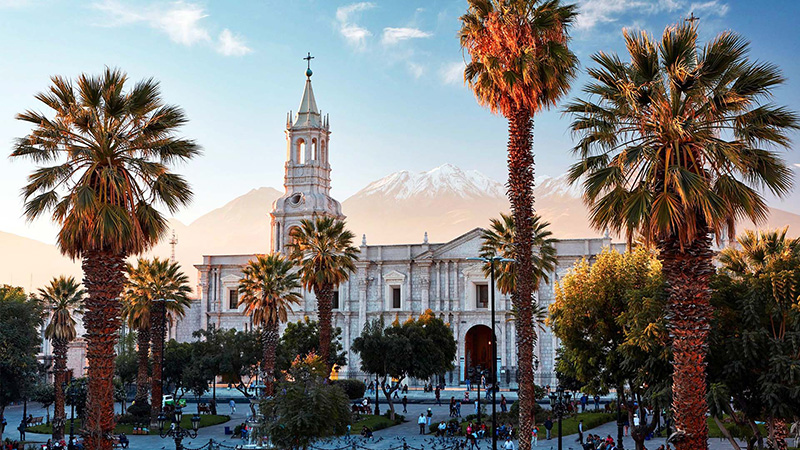 Arequipa
Arequipa
Puerto Maldonado and the Amazon
Located in southeastern Peru across the Amazon basin, Puerto Maldonado City is an ideal departure location to cruise the river. Experiencing the Amazon rainforest and the possibility to observe a wide variety of endemic animal species is unlike anything else in Peru. It's not uncommon to see jaguars, manatees, tapirs, red deer, monkeys, capybaras, and more in this region.
In the rainforest, visitors can choose to stay at one of the numerous resorts that provide exquisite lodges and convenient access to the area's two most popular features. The Tambopata National Reserve (Reserva Nacional Tambopata) is a protected area of 247,690 hectares in the Amazon jungle with more than 1200 plant categories and about 2360 wildlife species. The Bahuaja-Sonene National Park (Parque Nacional Bahuaja Sonene), located between Tambopata National Reserve and Madidi National Park in Bolivia, has a colossal scope of 1,091,416 hectares and more than 3400 of the best wildlife you can encounter in Peru, including the maned wolf and the spider monkey. A visit to this beautiful region can last for a week if you want to explore the wonders of these natural paradises fully.
Quick Question
What Our Clients Say
Explore the latest verified reviews of Odynovo's travel services on Tripadvisor, Google, Trustpilot, Product Review and more trusted platforms.
SUBSCRIBE TO WIN A FREE TOUR
Subscribe to our newsletter for a chance to win a free 7-day tour to India! And more insider travel news, exclusive offers, and inspiration will be sent straight to your inbox. Check our previous newsletters and get some sparks.

